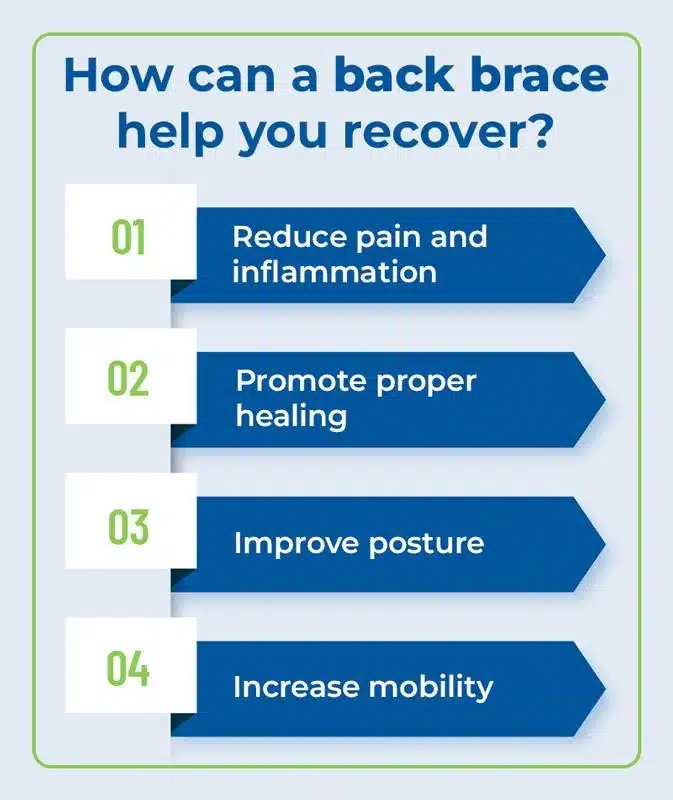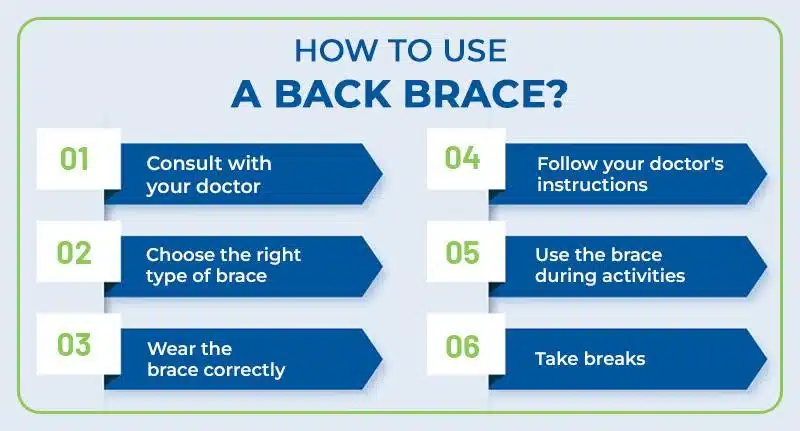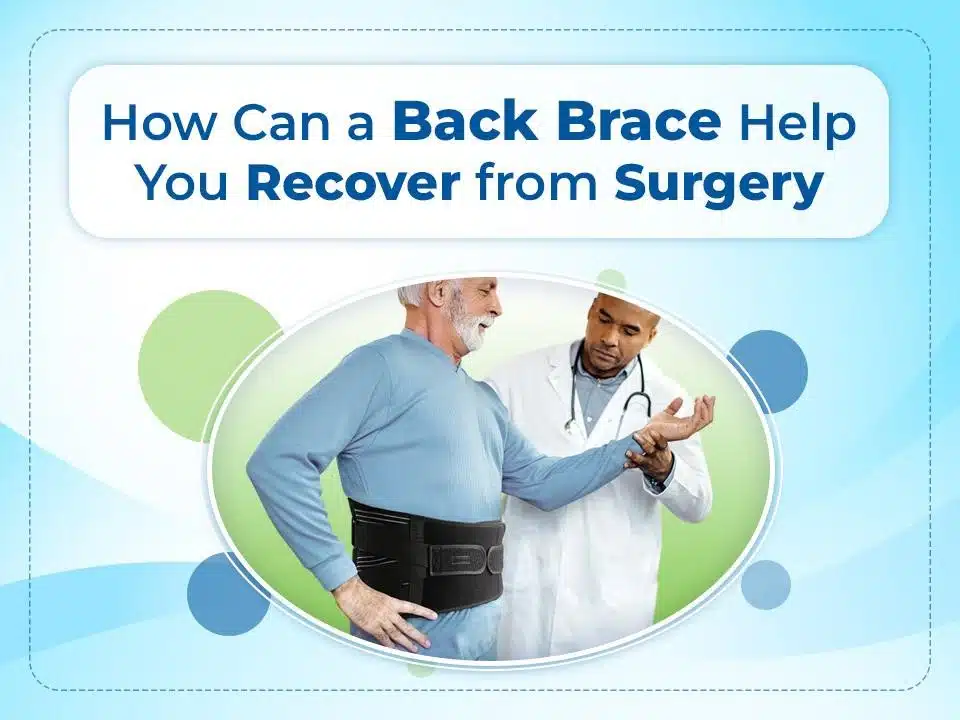Undergoing surgery can be a daunting experience, both physically and mentally. While your doctor will prescribe medication to manage your pain, it’s common to experience discomfort in various parts of your body, including your back. A back brace can be a helpful tool in aiding your recovery process. In this article, we’ll explore the benefits of using a back brace after surgery and how it can help promote proper healing.
What is a back brace?
A back brace is a medical device that supports the spine and limits the range of motion. It’s typically made of a combination of rigid and soft materials and can be adjusted to fit the individual’s body. There are different types of back braces available, including soft elastic braces, corsets, and rigid braces. The type of brace recommended for you will depend on the type of surgery you’ve had and your individual needs.
How can a back brace help you recover?
When recovering from surgery or injury, using a back brace can be an effective way to aid in the healing process. Here are some ways a back brace can help you recover:

How can a back brace help you recover?
1. Reduce pain and inflammation
After surgery, it’s common to experience pain and inflammation in the affected area. A back brace can help reduce pain by providing support to the spine and limiting movement. By limiting your range of motion, a back brace can also help reduce inflammation in the affected area, which can help speed up the healing process.
2. Promote proper healing
Proper healing is essential after surgery, and a back brace can help promote the healing process. By providing support to the spine, a back brace can help keep the affected area in the correct position, which can help prevent further damage and promote proper healing. Additionally, a back brace can help reduce the risk of complications such as muscle strain and herniation.
3. Improve posture
Poor posture can put unnecessary stress on your spine, which can lead to pain and discomfort. After surgery, it’s important to maintain good posture to promote proper healing. A back brace can help improve posture by providing support to the spine and reminding you to sit or stand up straight. By maintaining good posture, you’ll reduce the risk of further injury and help promote proper healing.
4. Increase mobility
After surgery, it’s common to experience limited mobility in the affected area. A back brace can help increase mobility by providing support to the spine and allowing you to move more comfortably. By providing support to the spine, a back brace can also help reduce the risk of injury and promote proper healing.
Read More: Medicare-Approved Glucose Monitors for Seniors
Types of back braces
When it comes to back braces, there are several different types to choose from. Here are the most common types of back braces:
1. Soft elastic braces
Soft elastic braces are made of a flexible material that provides compression to the affected area. They’re typically used for minor back injuries and can be worn during everyday activities.
2. Corsets
Corsets are made of a rigid material and provide more support than soft elastic braces. They’re typically used for moderate to severe back injuries and can be worn during everyday activities.
3. Rigid braces
Rigid braces are the most supportive type of back brace and are typically used for severe back injuries or after surgery. They’re made of a hard plastic material and provide the most support to the spine.
How to use a back brace?.
It’s important to use a back brace correctly to ensure that it provides the maximum benefit. Here are some tips on how to use a back brace effectively:

How can a back brace help you recover?
1. Consult with your doctor: Before using a back brace, it’s important to consult with your doctor to ensure that it’s the right option for you.
2. Choose the right type of brace: The type of brace you need will depend on the type of surgery you’ve had and your individual needs.
3. Wear the brace correctly: Make sure that you wear the brace correctly and adjust it to fit your body properly. A poorly fitted brace can cause more harm than good.
4. Follow your doctor’s instructions: Follow your doctor’s instructions on how long to wear the brace and when to take it off. Wearing a brace for too long can cause muscle weakness and atrophy.
5. Use the brace during activities: Use the brace during activities that may put stress on your spine, such as lifting heavy objects or standing for long periods.
6. Take breaks: It’s important to take breaks from wearing the brace to allow your muscles to rest and prevent muscle weakness.
What to expect during the recovery process with a back brace?
Recovering from spine surgery can be a long and sometimes challenging process. In this section, we’ll provide an overview of what to expect during the recovery process with a back brace, including tips for managing pain and promoting healing.
- Pain management: Pain is a common side effect of surgery and recovery. Your doctor may prescribe pain medication or recommend over-the-counter pain relievers to help manage your pain. You can also try using ice packs or heat therapy to help reduce pain and inflammation.
- Physical therapy: In addition to wearing a back brace, physical therapy may be recommended to help improve mobility and strength. A physical therapist can work with you to develop an exercise and stretching routine that complements your use of a back brace.
- Follow-up appointments: It’s important to attend all follow-up appointments with your doctor to monitor your progress and ensure that you’re healing properly.
Frequently asked questions about using a back brace after surgery
Now, we’ll address some common questions and concerns people may have about using a back brace after surgery.
1. How long do I need to wear a back brace after surgery?
The length of time you’ll need to wear a back brace depends on the type of surgery you had and your doctor’s recommendations. Some people may need to wear a brace for several weeks or months.
2. Can a back brace be worn under clothing?
Yes, many back braces are designed to be worn discreetly under clothing.
3. Will wearing a back brace limits my mobility?
While a back brace may limit some of your movements, it’s important to continue moving and engaging in light exercise as recommended by your doctor and physical therapist.
4. How do I know if my back brace is fitting correctly?
Your doctor or physical therapist can help ensure that your back brace is fitting correctly and providing the necessary support. Be sure to follow all instructions for adjusting and wearing the brace.
In Conclusion
A back brace can be a helpful tool in aiding your recovery after surgery. By providing support to the spine and limiting movement, a back brace can help reduce pain and inflammation, promote proper healing, improve posture, and increase mobility. However, it’s important to use a back brace correctly and consult with your doctor before using one. With the right type of brace and proper use, a back brace can help you recover from surgery more comfortably and effectively.
Our back braces feature adjustable compression systems and are available for lower and mid-back support. If you’re not sure what product is right for you or if you’re eligible for insurance coverage, Artik Medical Supply will provide the guidance you need. We can even communicate with your doctor to determine the best back brace for you. Contact us today to check for insurance coverage.
Article Key Phrases
- Find relief with a back brace after surgery.
- Recover faster with the help of a back brace.
- Reduce pain and swelling with a back brace.
- The benefits of wearing a back brace after surgery.
- Maximizing your recovery with a back brace after surgery.







